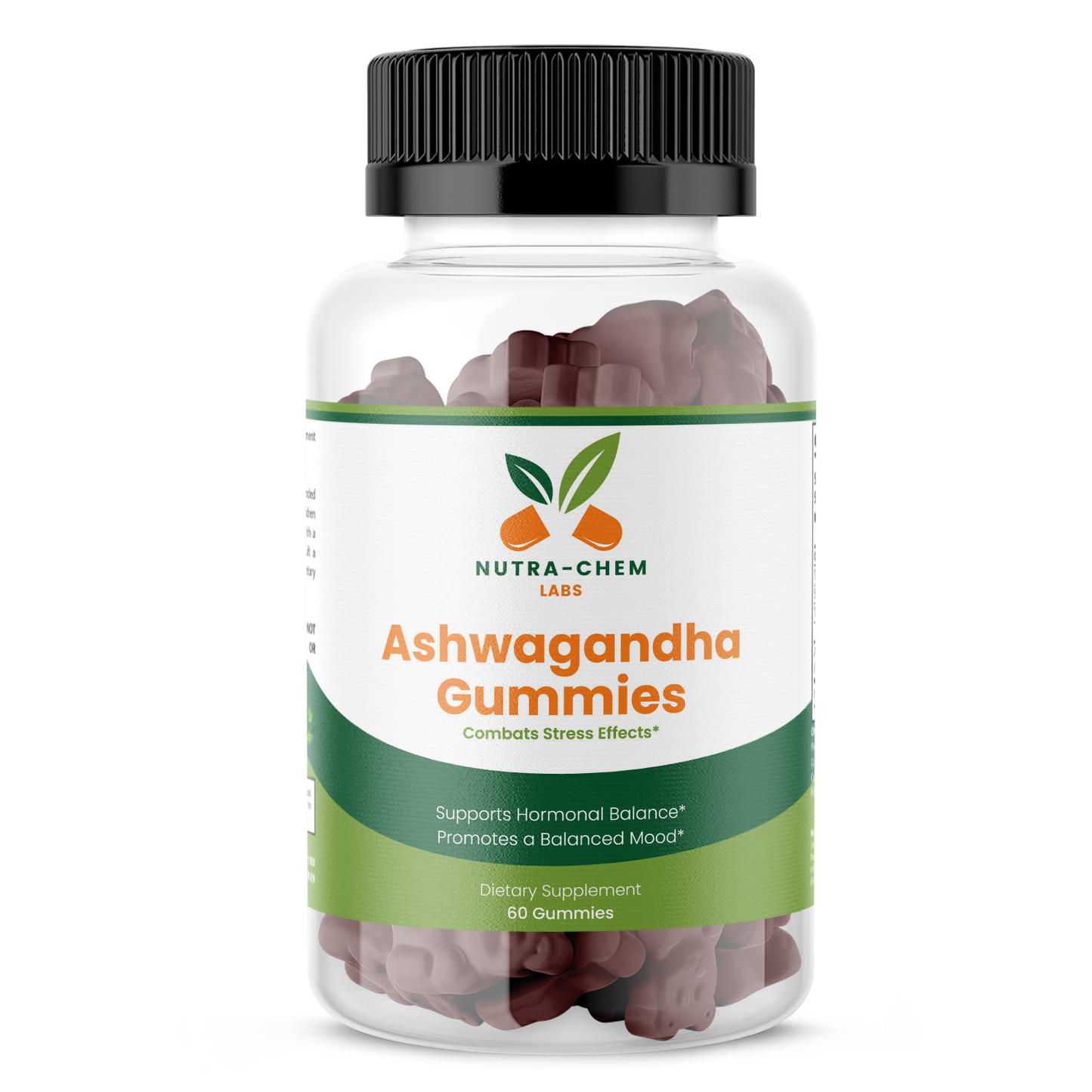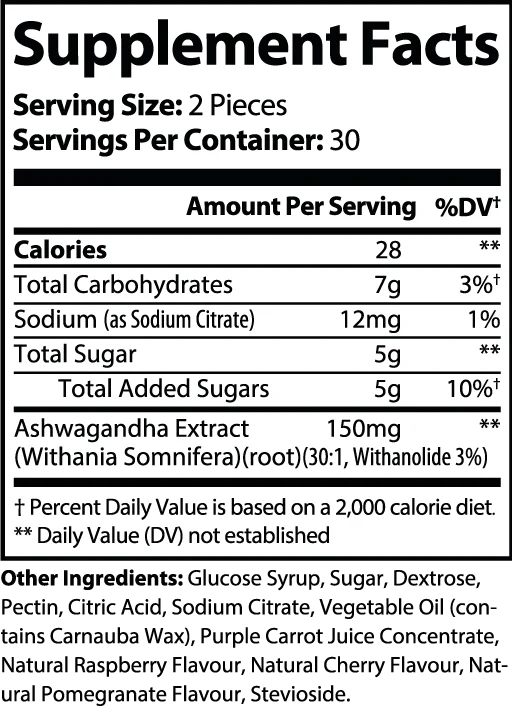- Description
- Key Ingredients & Benefits
- Usage & Directions
- Quality Standards
- Warnings
- Sources
Ashwagandha Gummies are a tasty, plant-powered addition to your daily wellness routine, delivering a traditional adaptogen in a convenient form. Rooted in holistic health practices, this formula is crafted with a focus on balance, energy, and everyday support.
-Adaptogen Support: Ashwagandha is a time-honored herb traditionally used to promote balance and help the body adapt to everyday stressors.
-Daily Wellness Formula: A modern take on ancient herbal support, ideal for helping you stay centered and resilient.
-Tasty & Convenient: Delicious gummies that fit easily into your routine—no capsules required.
Ashwagandha:
- Supports cardiovascular, hormonal, immune, and sleep health, while aiding in mood regulation and weight management.
- Reduces cortisol, improving body composition, mood, and stress resilience.
- Enhances physical performance by increasing VO2 max, muscle endurance, and reducing fatigue.
- Promotes better sleep quality by decreasing cortisol levels, improving REM cycles, and aiding recovery.
- Supports hormonal and immune health by reducing inflammation and enhancing sex hormone levels.
Take two gummies daily as a dietary supplement.
Gummies are third-party tested for purity, made in the USA in a GMP-certified, FDA-registered facility.
-*These statements have not been evaluated by the Food and Drug Administration. This product is not intended to diagnose, treat, cure, or prevent any disease. -Tamper Seal: Use only if the seal is intact. Consult your health care practitioner if you are pregnant or nursing, taking medications, or have a medical condition, before taking this or any other product. -Store in a cool, dry place. Keep out of reach of children.
82. Langade, D., Kanchi, S., Salve, J., Debnath, K., & Ambegaokar, D. (2019). Efficacy and Safety of Ashwagandha (Withania somnifera) Root Extract in Insomnia and Anxiety: A Double-blind, Randomized, Placebo-controlled Study. Cureus , 11 (9), e5797. https://doi.org/10.7759/cureus.5797 83. Bonilla, D. A., Moreno, Y., Gho, C., Petro, J. L., Odriozola-Martínez, A., & Kreider, R. B. (2021). Effects of Ashwagandha ( Withania somnifera ) on Physical Performance: Systematic Review and Bayesian Meta-Analysis. Journal of functional morphology and kinesiology , 6 (1), 20. https://doi.org/10.3390/jfmk6010020




